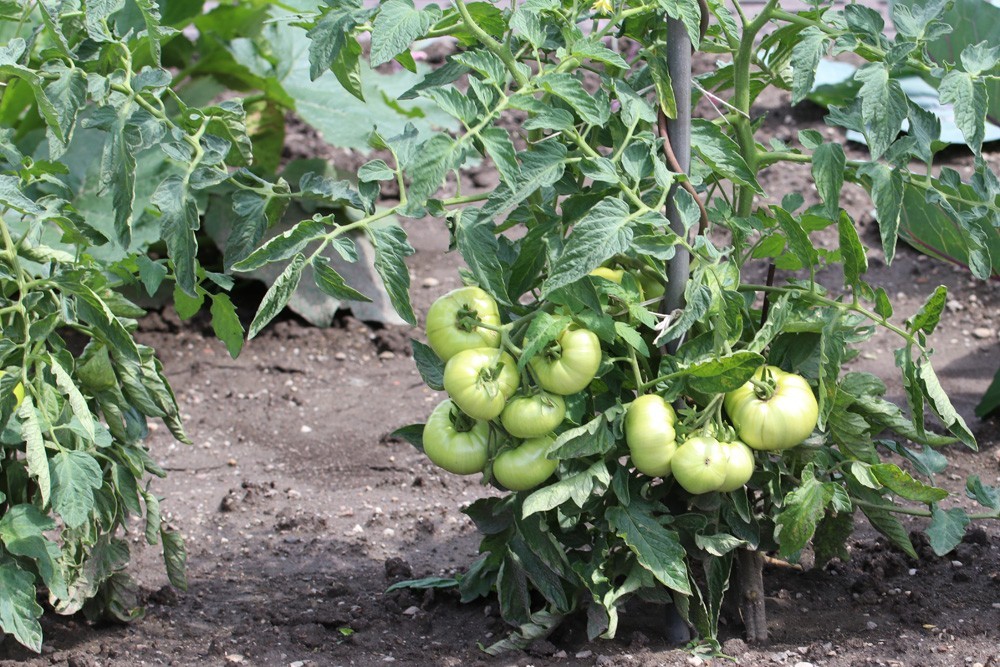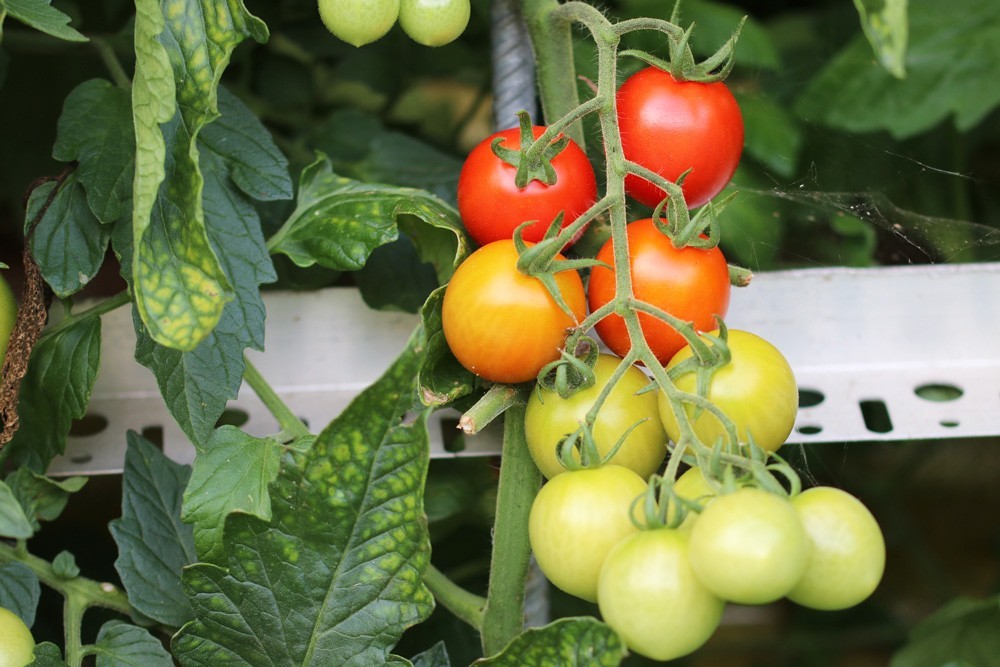Tomatoes benefit greatly from a layer of mulch, after all, mulching brings many advantages. Learn here when, how and with what you mulch tomatoes best!
Contents
Why mulch tomatoes?
Mulching tomatoes is not mandatory, but it is still highly recommended. This is because the plants benefit from this care measure in many ways: for one thing, mulching keeps moisture in the soil, which is very beneficial to thirsty tomatoes. In addition, since evaporation is prevented by a layer of mulch, watering is required less often. But that’s not all, because the following additional points speak in favor of mulching:
- Improvement of the soil structure
- better and healthier growth of tomatoes
- additional nutrients
Note: A layer of mulch also provides protection from low temperatures and frost.
When to mulch tomatoes?
In general, it pays to mulch tomatoes throughout the season. This is usually started in March or April, so that the freshly planted tomato plants have nutrients directly in the soil in May. This is because by then some of the mulch in the soil has already been processed into valuable humus, so the plants have additional nutrients available to them.
How to mulch tomatoes?
Mulching itself is relatively simple, however, some points should still be considered in this care measure. In order for the plants to benefit from the mulch layer, it must be sufficiently thick. If it is too thin, moisture will not be retained well in the soil and any weeds can easily grow through. On the other hand, if it is too thick, the soil will not be able to breathe and rot will be encouraged. That is why the mulch layer should have a thickness of 5 to 10 centimeters. To mulch the tomatoes is best to proceed as follows:

- Remove weeds
- Roughly loosen soil with hoe
- spread mulch on soil
- keep some distance from the stem
Note: The distance from the mulch layer to the stem is important, otherwise it will favor the risk of rotting.
With what to mulch tomatoes?
For mulching tomatoes, it is recommended to use only healthy and organic material. For this purpose, the amateur gardener can choose from different materials, most of which are available or accumulate in the home garden:
Nettle leaves
Nettle leaves can be used in many ways, including mulching tomatoes. This is because when the leaves decompose, they release nitrogen, which is very important for the growth of tomatoes. For this reason, tomatoes can also be additionally fertilized with nettle broth. However, if you want to use the leaves for mulching, it is best to proceed as follows:

Take leaves from non-flowering or seed-bearing plants.
shred leaves
alternatively spread whole plant on topsoil
Note: Generally, it is advisable to shred the nettle leaves, as this allows them to be digested better by soil organisms.
Tomato leaves
A large part of the tomatoes should be regularly cut out, that is, freed from excess side shoots and leaves. However, the cut shoots and leaves in no way need to dispose of, because they are excellent for mulching tomatoes.
Grass clippings
Lawn mowing also produces valuable mulch material, as grass clippings are also suitable for mulching tomatoes. It is practical that the grass clippings can be reused directly as they are produced in the grass catch bag. When mulching with grass clippings, it is advisable to note the following:
- Grass clippings do not need to dry out beforehand
- mulch layer should be max. 10 cm thick
- too thick mulch layer favors rotting
Note: There are special mulch mowers that finely chop the grass during mowing. This allows soil organisms to better utilize the mulch.
Leaves
If you have trees in your yard, you can use their leaves for mulching. In particular, the leaves of beech, maple and birch trees are excellent for mulching tomatoes. Therefore, it is worth collecting the fallen leaves in the fall and then use them for mulching as follows:
- Let leaves rest for 2 weeks
- Spread leaves around tomato plants
Compost
Compost is not only a popular fertilizer, but also an excellent mulching material for tomatoes. Ideally, the compost is also enriched with horn shavings, so that the tomatoes have enough nitrogen.
Not recommended mulching material
In addition to a variety of recommended mulch materials, there are some that are only partially suitable or not suitable for mulching tomatoes. Straw does qualify as a top mulch layer and can help prevent splashing water when watering. However, straw is not suitable as a stand-alone mulch because it removes nutrients from the soil. In addition to straw, amateur gardeners should also avoid the following mulch materials:
- Bark mulch: removes nitrogen from the soil, promotes lowering of the pH value.
- Sawdust: often contaminated










